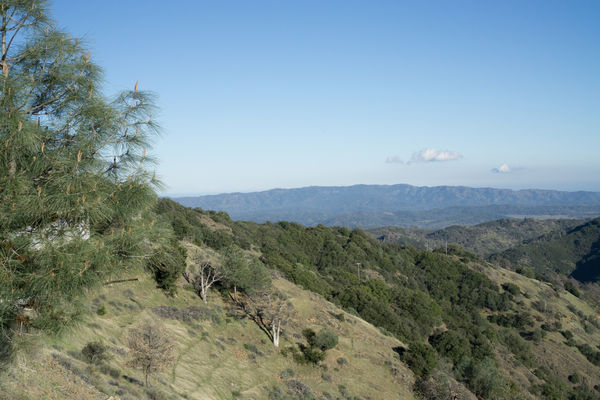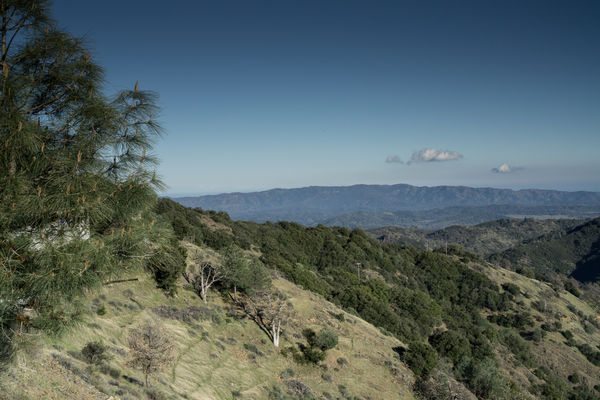Blown out sky
Feb 19, 2018 14:52:54 #
Hi to all,
As you might already know South Florida is very sunny and humid. Normally I go out to take some pictures at daytime around 9 Am to 10 Am. The sun is already strong at that time and often I loose details on the images because of the highlights. This happens mostly with the sky. Unfortunately, currently that is the only time I can go out to take pictures as I have small children. Do you have any tips or advice to deal with this? Sometimes I underexpose a little to gain some details on the sky and I open later the shadows during processing. Is this a viable solution or this is completely wrong?
As you might already know South Florida is very sunny and humid. Normally I go out to take some pictures at daytime around 9 Am to 10 Am. The sun is already strong at that time and often I loose details on the images because of the highlights. This happens mostly with the sky. Unfortunately, currently that is the only time I can go out to take pictures as I have small children. Do you have any tips or advice to deal with this? Sometimes I underexpose a little to gain some details on the sky and I open later the shadows during processing. Is this a viable solution or this is completely wrong?
Feb 19, 2018 14:54:03 #
Feb 19, 2018 15:02:38 #
Using a tripod, you could do in-camera bracketing/HDR (combining 3 - 5 images, at different exposures).
Do you shoot in raw? Are you pleased with the results from your edits of "opening the shadows?" There is a post processing forum on UHH where you could ask for help with your editing workflow if you suspect you aren't doing exactly the best way. Click on "all sections" at bottom of this page.
The photos you've posted to UHH so far - which look great IMO - show that you have a variety of interests that don't require a lot of sky. Other possibilities include black and white or silhouettes, or working with textures in your editing software (a way to replace/enhance the sky that DWU2 mentions).
Welcome to UHH!
Do you shoot in raw? Are you pleased with the results from your edits of "opening the shadows?" There is a post processing forum on UHH where you could ask for help with your editing workflow if you suspect you aren't doing exactly the best way. Click on "all sections" at bottom of this page.
The photos you've posted to UHH so far - which look great IMO - show that you have a variety of interests that don't require a lot of sky. Other possibilities include black and white or silhouettes, or working with textures in your editing software (a way to replace/enhance the sky that DWU2 mentions).
Welcome to UHH!
Feb 19, 2018 15:07:47 #
ricardo7
Loc: Washington, DC - Santiago, Chile
If you don't want to go the bracketing and combining images route you are
pretty limited. Another option is a graduated neutral density filter to tone
down the bright sky. Combined with a slight under exposure might get you
better pictures.
pretty limited. Another option is a graduated neutral density filter to tone
down the bright sky. Combined with a slight under exposure might get you
better pictures.
Feb 19, 2018 15:08:23 #
You can shoot in RAW so you have the most detail available in the shadows for processing. But, exposing for the highlights of the sky is the method with processing of the shadows in post. You can go multi-image HDR or simply 1-exposure based on the sky highlights and then "HDR" in post where some softwares can use a single image as input. You can also create copies of the single image and adjust +1 / -1 in copies of the image to create a 3-image input to software that require multiple files.
You might also use flash as a fill light, depending on your composition and camera type. Use flash exposure compensation to control the amount of light added to the fill. You'll have to experiment and practice, but you can expose for the sky in manual with no flash and then add and adjust the flash output to add light to the details in the shadows. This approach takes a while to "dial in" for a given static scene, but with practice you can begin to quickly judge the settings needed based on your camera and flash and the available light in a given situation.
You might also use flash as a fill light, depending on your composition and camera type. Use flash exposure compensation to control the amount of light added to the fill. You'll have to experiment and practice, but you can expose for the sky in manual with no flash and then add and adjust the flash output to add light to the details in the shadows. This approach takes a while to "dial in" for a given static scene, but with practice you can begin to quickly judge the settings needed based on your camera and flash and the available light in a given situation.
Feb 19, 2018 15:17:39 #
photoman022
Loc: Manchester CT USA
I concur with the idea of shooting for HDR. One of the things I do is shoot for the sky in RAW; I then make multiple photos of that one RAW capture (each new photo opening up detail in the shadows) and I combine them in Photo Shop Elements in what some experts call a faux HDR image. The multiple images from the same file prevents ghosting.
Feb 19, 2018 15:20:48 #
lianetdiaz wrote:
Hi to all, br br As you might already know South ... (show quote)
Try to avoid sky altogether.
Shoot HDR to increase dynamic range. Shoot RAW, combine in post. If your subject is moving, then processing will be more difficult.
Use a graduated neutral density filter. This will lower the exposure of the sky while preserving exposure of the subject (as long as the subject is well separated from the sky).
If you are having problems with glare on your subject, use a circular polarizing filter to reduce glare. Won't work on some metal or highly reflective surfaces, but will cut reflections on other surfaces.
Feb 19, 2018 15:26:45 #
Welcome to UHH. One way to deal with the problem you describe is to use graduated neutral density filters.
There is a good explanation here:
https://digital-photography-school.com/using-graduated-neutral-density-filters-for-landscape-photography/
Mike
on edit: I see that jcboy3's post got in just ahead of mine.
There is a good explanation here:
https://digital-photography-school.com/using-graduated-neutral-density-filters-for-landscape-photography/
Mike
on edit: I see that jcboy3's post got in just ahead of mine.
Feb 19, 2018 15:33:19 #
lianetdiaz wrote:
Hi to all, br br As you might already know South ... (show quote)
I shoot in California, and our sky is also very bright. But I shoot RAW and then in processing with Lightroom, I pull back on the Whites and Highlights sliders and tame that bright sky.
Or you can have the SW simulate a graduated neutral density filter and cut back on the brightness of the sky.
These two methods are very easy to implement and only take seconds.
If you try this with JPEG, you won't have as much exposure adjust range, and in fact can lead to banding in the sky which is even worse.
Attached is a quick before and after showing the effect of the Lightroom Neutral Density Filter.
Feb 19, 2018 16:23:28 #
A CPL can darken a blue sky, but for the best effect you have to shoot 90 degrees to the sun. Also try not to shoot directly into the sun. Or you can spot meter for the main subject and set exposure compensation to darken an F-stop. Or you can meter for the kids and let the sky take care of itself.
Feb 19, 2018 16:39:57 #
lianetdiaz wrote:
Hi to all, br br As you might already know South ... (show quote)
If you have Lightroom, or some photo editor that allows you to use graduated filters, you can extend one from the top of the image to where the horizon is and apply a DeHaze filter. DeHaze will often bring out hidden blues that are not apparent in blown out skies. Or with the grad filter, lower exposure 1 - 2 stops and apply DeHaze.
Feb 19, 2018 16:41:30 #
Feb 19, 2018 16:44:41 #
Graduated neutral density filters. If you get square ones you can just hold them over the front of the lens and slide them around to suite your horizon or skyline. If the sky is not completely blown out you can pull a ND or colored gradient over the sky in PP also. Dehaze works great to bring up details in clouds you didn't even know were there as long as you don't overdo it and create noise.
Feb 19, 2018 16:45:17 #
lianetdiaz wrote:
Hi to all, br br As you might already know South ... (show quote)
Use some grad ND's! You can place them exactly where you like them to be! Hard edged are best!
Feb 19, 2018 17:03:18 #
JimH123 wrote:
I shoot in California, and our sky is also very br... (show quote)
The need for graduated neutral density filters is greater with overcast skies, no? In your example the is a lot of light on the landscape.
Mike
If you want to reply, then register here. Registration is free and your account is created instantly, so you can post right away.







